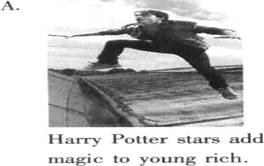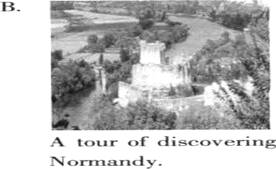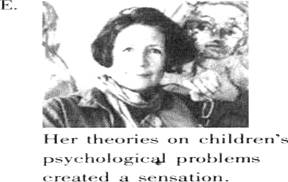-
Ⅱ 阅读(共两节,满分50分)
第一节:阅读理解(共20小题;每小题2分,满分40分)
阅读下列短文,从每题所给的A、B、C和D项中,选出最佳选项,并在答题卡上将该项涂黑。
So long as teachers fail to distinguish between teaching and learning, they will continue to undertake to do for children that which only children can do for themselves. Teaching children to read is not passing reading on to them. It is certainly not endless hours spent in activities about reading. Douglas insists that“ reading cannot be taught directly and schools should stop trying to do the impossible”.
Teaching and learning are two entirely different processes. They differ in kind and function. The function of teaching is to create the conditions and the climate that will make it possible for children to devise the most efficient system for teaching themselves to read. Teaching is also public activity. It can be seen and observed.
Learning to read involves all that each individual does to make sense of the world of printed language. Almost all of it is private, for learning is an occupation of the mind, and that process is not open to public scrutiny.
If teacher and learner roles are not interchangeable ,what then can be done through teaching that will aid the child in the quest(探索)for knowledge? Smith has one principal rule for all teaching instructions. “Make learning to read easy, which means making reading a meaningful, enjoyable and frequent experience for children. ”
When the roles of teacher and learner are seen for what they are, and when both teacher and learner fulfill them appropriately, then much of the pressure and feeling of failure for both is eliminated. Learning to read is made easier when teachers create an environment where children are given the opportunity to solve the problem of leaning to read by reading.
1.he problem with the reading course as mentioned in the first paragraph is that _______________.
A. it is one of the most difficult school courses
B. students spend endless hours in reading
C. reading tasks are assigned with little guidance
D. too much time is spent in teaching about reading
1.he teaching of reading will be successful if _______________.
A. teachers can improve conditions at school for the students
B. teachers can enable students to develop their own way of reading
C. teachers can devise the most efficient system for reading
D. teachers can make their teaching activities observable
3.The underlined word“ scrutiny” most probably means“______________”.
A. inquiry B. observation
C. control D. suspicion
4.According to the passage, learning to read will no longer be a difficult task when ______________.
A. children become highly motivated
B. teacher and learner roles are interchangeable
C. teaching helps children in the search for knowledge
D. reading enriches children’s experience
5.The main idea of the passage is that ______________.
A. teachers should do as little as possible in helping students learn to read
B. teachers should encourage students to read as widely as possible
C. reading ability is something acquired rather than taught
D. reading is more complicated that generally believed
-
TAIBEI-Increasing numbers of Taiwanese students are joining the island’s “China rush”, seeking education on the Chinese mainland.
According to official Chinese figures, the number of Taiwanese students admitted into college and postgraduate(研究生)programs on the mainland totaled 461 in 1996, 928 in 1997 and 839 in 1998.Although no latest official numbers were available,” Netbig. Com Said this number had risen between 30 to 50 percent annually in the past two years with well over 1000 entering mainland campuses last year.
The Internet site, based in the Chinese city of Shenzhen, provides education service and information on Chinese mainland college and universities. “Many Taiwanese believe a Chinese education giving more knowledge about the people and culture in the mainland will increase their chances in the Chinese job market, Net. Com vice-president Ingrid Huang said.“I believe it will give me hands-on experience in the business field in the Chinese mainland and a better understanding of the Chinese mainland people,” said Lydia Chang, a 19-year-old majoring in journalism at Shih Shin University. Chang plans to go on to get a master’s degree in business administration in Shanghai, which she says offers the best environment for such studies.
A journalism graduate student, surnamed Lin, at the National Taiwan University said he would like to study law on the Chinese mainland since “there will be better career prospects now that more Taiwanese companies are going there”. “They hope the children could build up connections which could later become useful in their business operations,” said Yang Ching-yao, professor of the Chinese mainland studies. A Netbig. Com survey showed the campuses favored by Taiwan students included Beijing, Qinghua and Renmin universities in Beijing, and Jinan and Zhongshan universities in Guangzhou. The most popular studies were law, business and Chinese medicine.
At present, Chinese Taibei doesn’t recognize diplomas earned in the Chinese mainland nor help with any inquiries about studying there. But recognizing the trend, education authorities are giving a final form to a policy accepting certificates(证书)from selected universities.
1.ore Taiwanese students study on the Chinese mainland because ___________.
A.Taiwan will reunite with the mainland sooner or later
B.the fees asked for are lower than those of Taiwan
C.what they have learned on the mainland will bring them a bright future
D.there are many famous universities for them to choose
2.Some business executives were sending their children to study in the Chinese mainland so that their children ___________.
A.could receive better education B.could learn more about the policy there
C.could do well in the business operations D.could make more friends there
3.The underlined word “it” in the third paragraph refers to __________.
A.Netbig. Com B.a Chinese education on the mainland
C.the Chinese job market D.the university
4.The author wrote the article to tell us ______________.
A.more Taiwanese students are studying on the mainland
B.the number of Taiwanese students going to universities on the mainland had been increasing year after year
C.education on the mainland is more attractive compared with that of Taiwan
D.Taiwan and the mainland should cooperate with each other in every field.
5.Which is true according to the passage?
A.Chinese Taibei recognizes diplomas earned on the Chinese mainland
B.The number of Taiwanese students going to study on the mainland will surely be increasing in the next few years.
C.Chinese Taibei doesn’t help with any inquiries about Taiwanese studying in the mainland
D.Education of Taiwan is far behind the mainland.
-
People do not analyze every problem they meet. Sometimes they try to remember a solution from the last time they had a similar problem. They often accept the opinions or ideas of other people. Other times they begin to act without thinking. They try to find a solution by trial and error. However, when all these methods fail, the person with a problem has to start analyzing. There are six stages in analyzing a problem.
First the person must recognize that there is a problem. For example, Sam’s bicycle is broken, and he cannot read it to class as he usually does. Sam must see that there is a problem with his bicycle.
Next the thinker must define the problem. Before Sam can repair his bicycle, he must find out the reason why it does not work. For instance, he must determine if the problem is with the gears, the brakes, or the frame. He must make his problem more specific.
Now the person must look for information that will make the problem clearer and lead to possible solutions. For instance, suppose Sam decided that his bike does not work because there is something wrong with the gear wheels. At this time, he can look in his bicycle repair book and read about gears. He can talk to his friends at the bike shop. He can look at his gears carefully.
After studying the problem, the person should have several suggestions for a possible solution. Take Sam as an illustration. His suggestions might be: put oil on the gear wheels; buy new gear wheels and replace the old ones; tighten or loosen the gear wheels.
Eventually one suggestion seems to be the solution to the problem. Sometimes the final idea comes very suddenly because the thinker suddenly sees something new or sees something in a new way. Sam, for example, suddenly sees that there is a piece of chewing gum between the gear wheels. He immediately realizes the solution to his problem: he must clean the gear wheels.
Finally the solution is tested. Sam cleans the gear wheels and finds that afterwards his bicycle works perfectly. In short , he has solved the problem.
1.What is the best title for this passage?
A. Six Stages for Repairing Sam’s Bicycle B. Possible Ways to Problem-solving
C. Necessities of Problem Analysis D. Suggestions for Analyzing a Problem
2. In analyzing a problem we should do all the following except .
A. recognize and define the problem B. look for information to make the problem clearer
C. have suggestions for a possible solution
D. find a solution by trial or mistake
3. By referring to Sam’s broken bicycle, the author intends to _________.
A. illustrate the ways to repair his bicycle B. discuss the problems of his bicycle
C. tell us how to solve a problem D. show us how to analyze a problem
4. Which of the following is NOT true?
A. People do not analyze the problem they meet.
B. People often accept the opinions or ideas of other people.
C. People may learn from their past experience.
D. People can not solve some problems they meet.
5. As used in the last sentence, the phrase “in short” means _________.
A. in the long run B. in detail C. in a word D. in the end
-
The British National Health Service (NHS) was set up in 1948 and was designed to provide equal basic health care, free of charge, for everybody in the country. Before this time health care had to be paid for by individuals.
Nowadays central government is directly responsible for the NHS although it is administered by local health authorities. About 83 percent of the cost of the health service is paid for by general taxation and the rest is met from the National Insurance contributions paid by those in work. There are charges for prescription and dental care but many people, such as children, pregnant women, pensioners, and those on Income Support, are exempt from payment.
Most people are registered with a local doctor (a GP, or General Practitioner) who is increasingly likely to be part of a health centre which serves the community.
As the population of Britain gets older, the hospital service now treats more patients than before, although patients spend less time in hospital. NHS hospitals—many of which were built in the nineteenth century — provide nearly half a million beds and have over 480, 000 medical staff. The NHS is the biggest employer in Europe although Britain actually spends less per person on health care than most of her European neighbours.
During the 1980s there was considerable restructuring of the Health Service with an increased emphasis on managerial efficiency and the privatization of some services (for example, cleaning). At the end of the 1980s the government introduced proposals for further reform of the NHS, including allowing some hospitals to be self-governing, and encouraging GPs to compete for patients. Patients would be able to choose and change their family doctor more easily and GPs would have more financial responsibility. The political questions continue of how much money should be provided to support the NHS and where it should come from.
1. We can know from the first paragraph that ______________.
A. the original aim of the NHS was to provide equal basic health care for everybody
B. people didn’t have to pay for health care since the NHS was set up
C. patients were charged for receiving health care before 1948
D. the NHS was an organization which gave free advice to villagers
2. What do we know about the NHS?
A. It’s managed by the central government.
B. Its cost is mainly paid for by the National Insurance contributions.
C. It hires more people than any other unit in Europe.
D. Fewer patients go to its hospitals than before because they spend less on health care.
3. All the following statements about GPs are true except that they ____________.
A. take care of the local people’s health
B. often take part in competitions to see who is the best
C. work under high pressure nowadays
D. have more responsibilities than before
4. What does the underlined word “exempt” probably mean?
A. suffering B. different C. prevented D. free
5. The biggest problem for the NHS is ______________.
A. many hospitals are too old to be used
B. some services are in the charge of individuals
C. more and more patients go to GPs for treatment
D. there is not enough money for further reform





